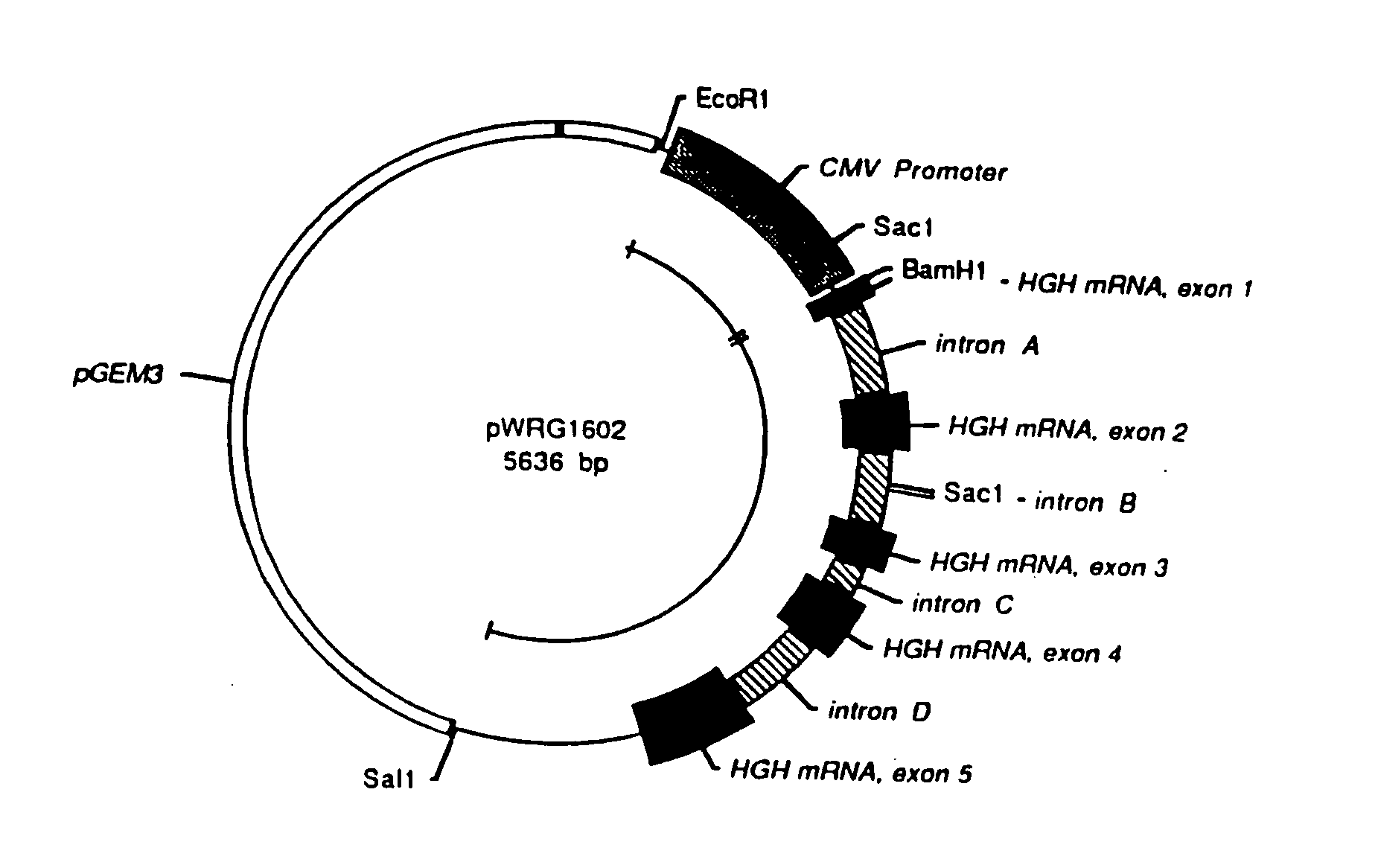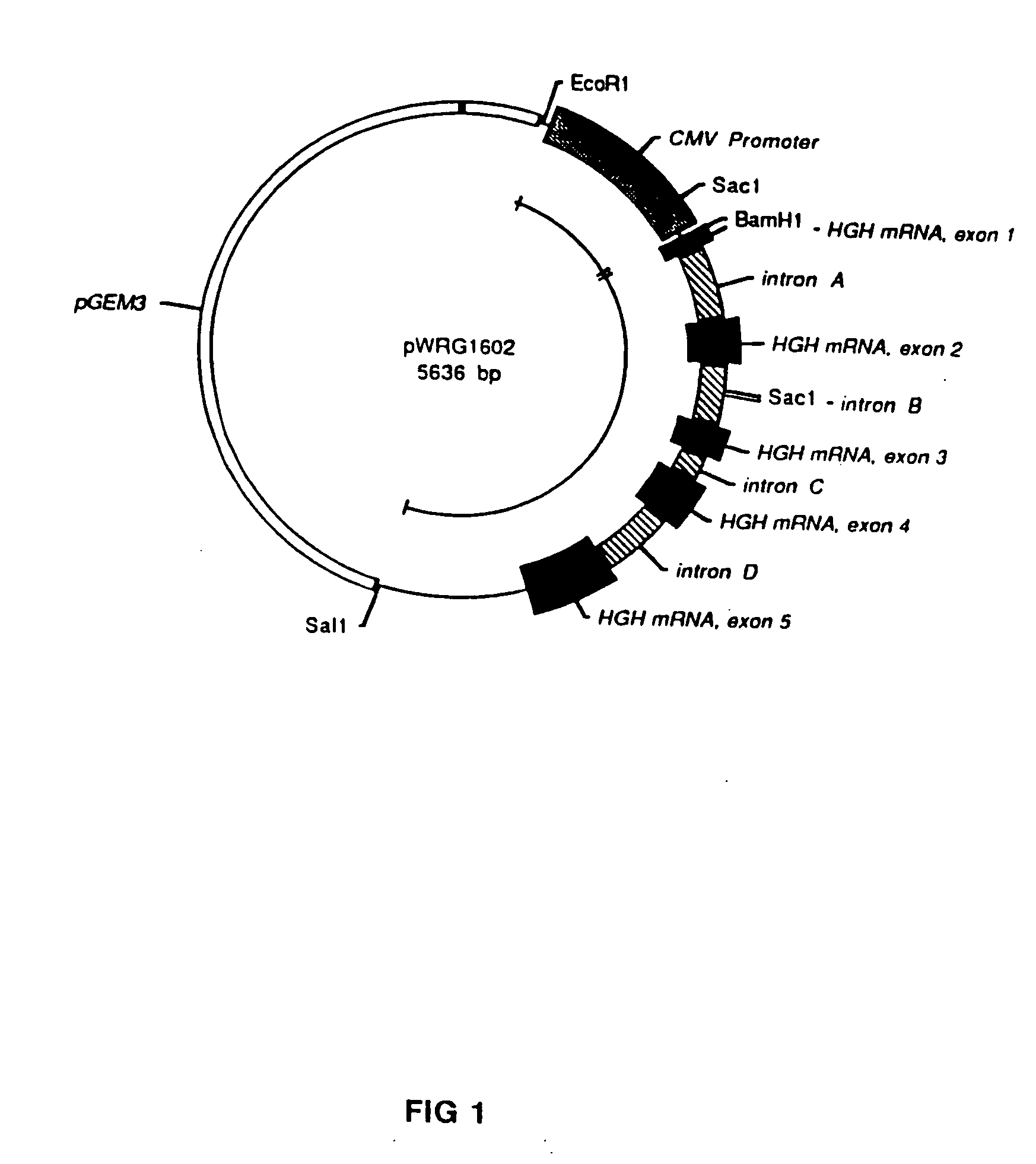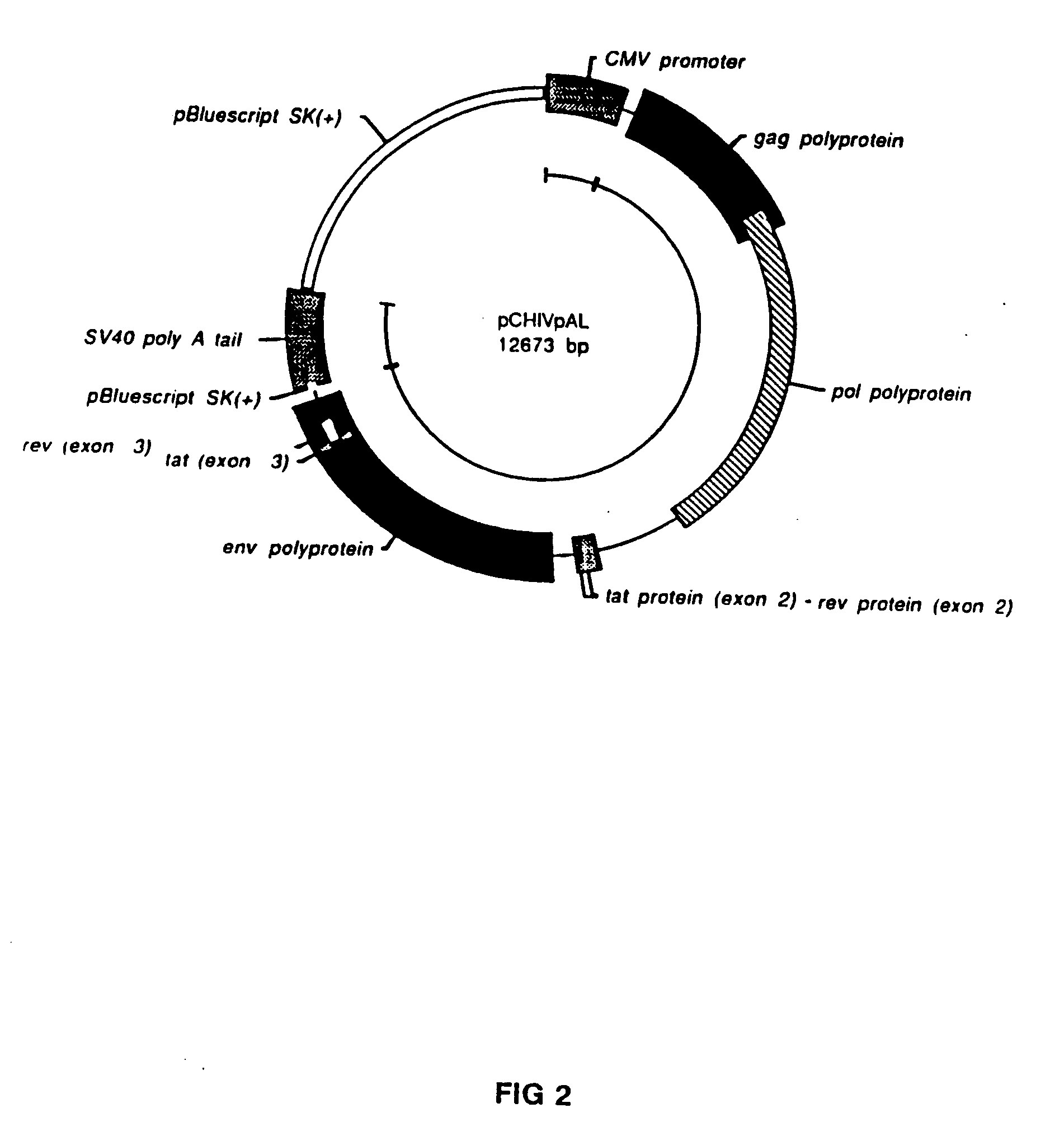Genetic induction of anti-viral immune response and genetic vaccine for viruses
a technology of immune response and genetic vaccine, applied in the field of genetic vaccines, can solve the problems of classical vaccine development strategies that have not yielded effective control, may or may not completely affect the immune response, and limit the extent of any subsequent infection, etc., and achieve the effect of not painful to administer and inherently sa
- Summary
- Abstract
- Description
- Claims
- Application Information
AI Technical Summary
Benefits of technology
Problems solved by technology
Method used
Image
Examples
examples
1. Preparation of Genetic Constructions for use as Immunogens
[0058] The genetic sequences for the human immunodeficiency virus (HIV) and simian immunodeficiency virus (SIV) have been fully determined, published, and are generally available. For example, the DNA sequence for the HIV strain designated LAV-1 / BRU is found in GenBank at Accession Number K02013, and the nucleotide positions referred to below are from that sequence. Samples of both HIV and SIV are readily available to qualified experimenters through appropriate depositories in health research facilities.
[0059] An HIV genetic vaccine expression vector, designated pC-HIVpAL was constructed to include an 8266 base pair fragment derived from the proviral genome of HIV strain LAV-1 / BRU. The fragment was the portion of the HIV DNA provirus sequence beginning at the Sac I site in nucleotide position 678 and ending at the Xho I site at nucleotide number 8944 (the nucleotide numbering convention used here assumes that nucleotide...
PUM
| Property | Measurement | Unit |
|---|---|---|
| Volume | aaaaa | aaaaa |
| Volume | aaaaa | aaaaa |
| Volume | aaaaa | aaaaa |
Abstract
Description
Claims
Application Information
 Login to View More
Login to View More - R&D
- Intellectual Property
- Life Sciences
- Materials
- Tech Scout
- Unparalleled Data Quality
- Higher Quality Content
- 60% Fewer Hallucinations
Browse by: Latest US Patents, China's latest patents, Technical Efficacy Thesaurus, Application Domain, Technology Topic, Popular Technical Reports.
© 2025 PatSnap. All rights reserved.Legal|Privacy policy|Modern Slavery Act Transparency Statement|Sitemap|About US| Contact US: help@patsnap.com



